
-
Save
If you’re anything like me, you’ve likely discovered the benefits of lifting your Subaru for adventures on unmaintained roads and maybe even 4×4 trails. However, as fun as it is to take your lifted Subaru off the beaten path, it comes with the responsibility of proper maintenance to ensure your Subie stays running and driving for years.
In this article, I’ll share my personal experiences with maintaining a lifted Subaru. From regular suspension checks to tire care and wheel alignment, I’ve learned through trial and error (emphasis on the errors) how to keep my cars running as well as possible.
1. Suspension Inspections
One of the first things I recommend is frequent inspections of your suspension components. Look for signs of wear, such as leaking shock fluid, damaged bushings, or loose bolts. Pay special attention to your lift kit components, as they endure additional stress off-road. Check for any signs of damage or fatigue.
I personally like to make sure my ball joints, tie rods, lug nuts, and trailing arm spacers (multilink spacers on newer Subarus) are snug before and after each trail day.
Haven’t bought a lift kit yet? Check out this article we wrote to find some of the best Subaru lift kits available.
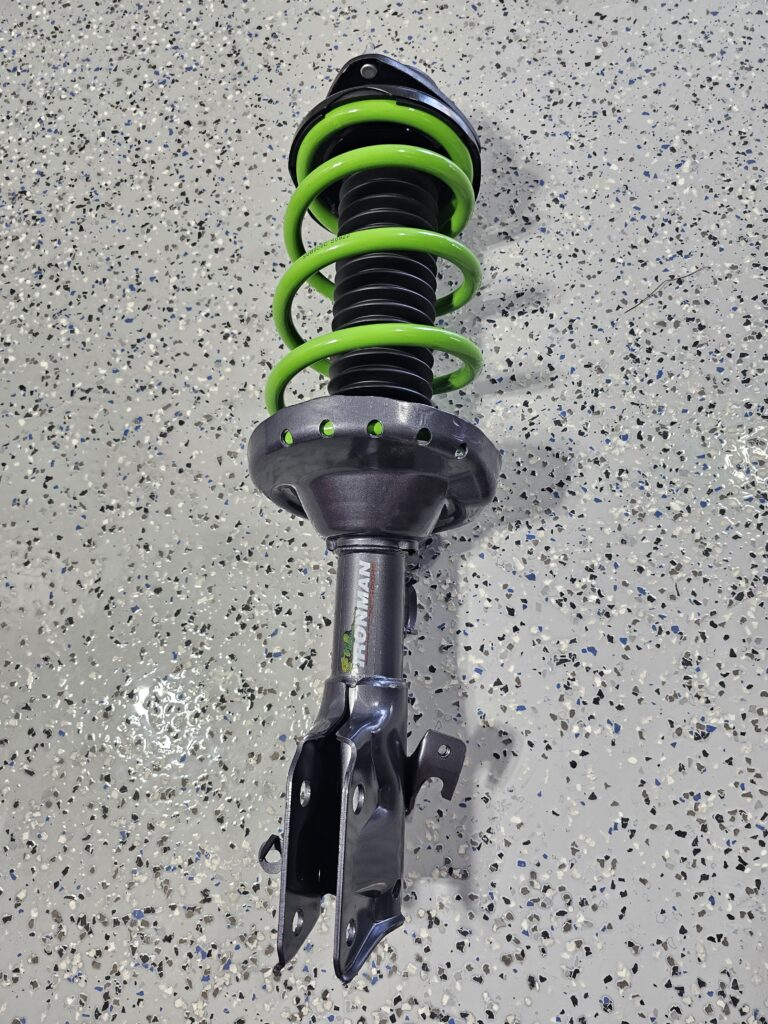
-
Save
2. Proper Cleaning
After off-road adventures, thoroughly clean your Subaru, including the undercarriage. This helps prevent the buildup of mud, dirt, and debris that can lead to corrosion and damage. Regular cleaning also ensures that no foreign objects are lodged in your suspension components.
Remember, things like sand or mud can get into sensitive areas such as joints and bearings and then grind them down. I learned this the hard way when I had a torn steering rack boot and didn’t realize it. I drove the car in a sandy area just one time and the sand got up into the torn boot. Then it quickly destroyed the steering rack after only one trip in the sand.
A great practice is to use a pressure washer to clean everything under the vehicle after off-road trips. This is also a good idea if you visit an area where salt might be present like a mountain pass or driving on the beach.
Rinsing any contaminants from the paint of your Subaru can also help reduce the risk of etching. If things like mud are allowed to remain for extended periods of time, they may scratch the paint. This may not be a big deal to some of us, but others have spent upwards of $40k on their Subaru and want to preserve some of its value.
3. Increased Routine Maintenance
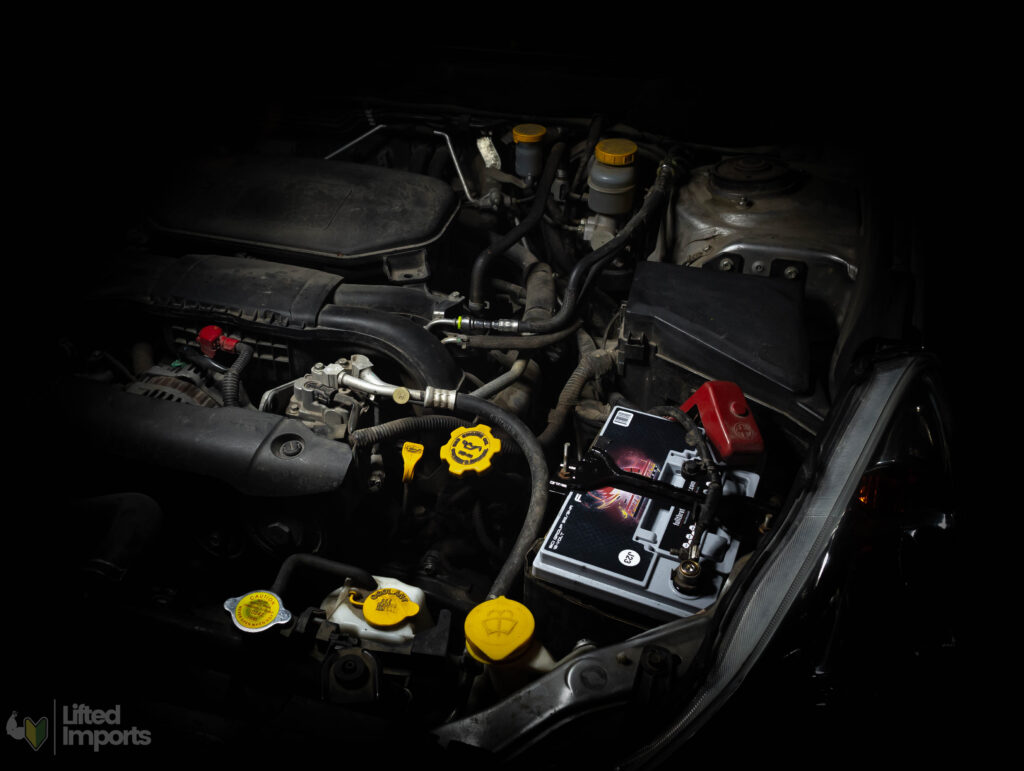
-
Save
Create a maintenance schedule that includes regular oil changes, fluid checks, and brake inspections. Lifted Subarus often require more frequent maintenance due to the added stress on components. Follow your manufacturer’s recommendations, and consider more frequent check-ups. I typically like to look at the manufacturer’s recommendation and then increase the frequency by about 10-20%. You can adjust this practice to fit your comfort level and then increase it even more after trips that are specifically harder on the car.
I also like to check my transmission fluid and differential fluid very regularly. I always check front and back differentials and I make sure there’s no sign of burnt transmission fluid. I like to use genuine Subaru transmission fluid, but it’s a good idea to consult with your local Subaru specialist to determine what’s best for your car.
4. Tire Care
Inspect your tires for cuts, punctures, and uneven wear before and after each off-road trip. Then rotate them regularly to ensure even tread wear. Aim for a rotation around every 6000 miles to ensure maximum tire durability and life. Properly rotated tires also provide the best handling for a safer drive.
While airing down for the trails is a great idea, don’t forget to maintain proper tire pressure while on pavement. Over-inflated or under-inflated tires can affect off-road performance and safety. This can also cause premature failure of the tires.
It’s also a great idea to carefully consider the right type of tire to handle the trails you plan to drive on. You can check out this article we wrote to find some of the best off-road tires available for Subarus.
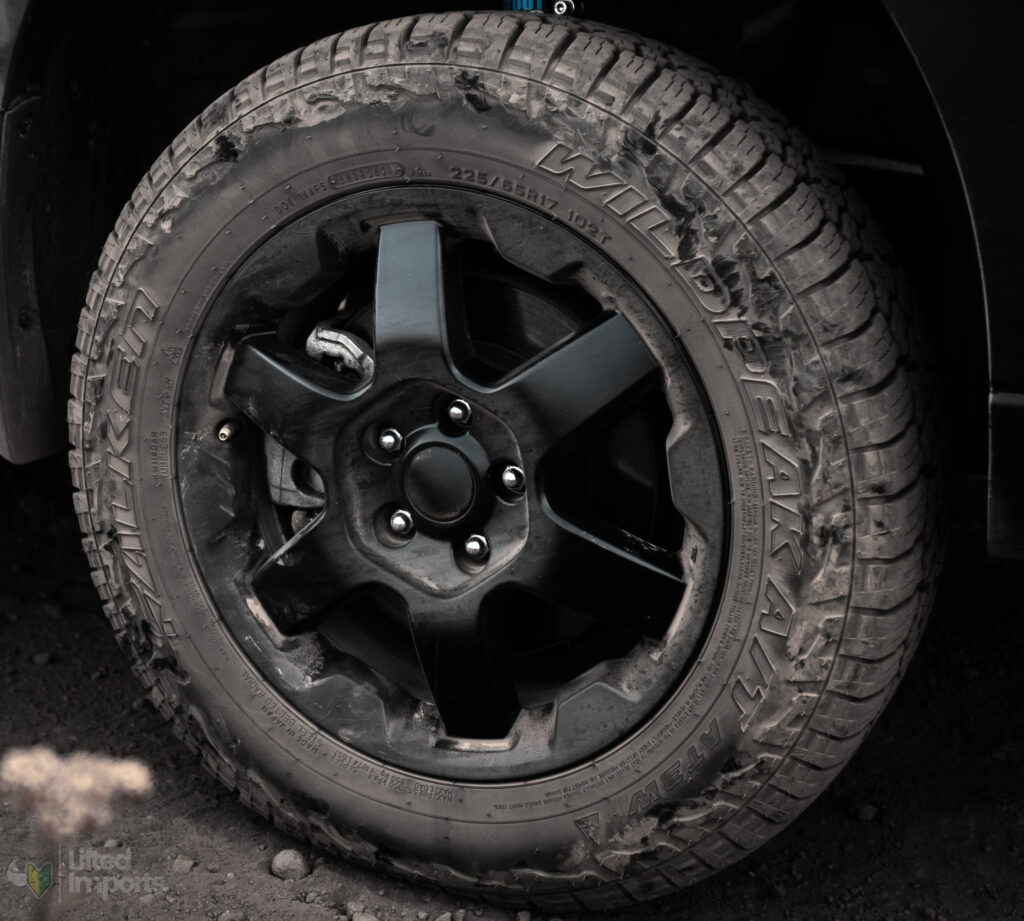
-
Save
5. Proper Alignment And Tire Balancing For Safe On-Road Performance
Lifted Subarus will experience changes in alignment after the installation process and then after some more harsh trail runs. Periodically check and have a professional adjust the alignment to prevent uneven tire wear and handling issues. Balancing your tires also ensures a smooth ride, especially at higher speeds.
It’s also a great idea to have your alignment professional help you inspect the tie rods during alignments. These can wear out a bit quicker on Subarus that are driven off-road.
6. Lubrication
Most off-road vehicles have grease fittings to keep different joints and steering components lubricated. Subarus don’t usually have these fittings so it’s important to check ball joint boots, CV axle boots, and tie rod boots for any cracking that may lead to a loss of lubrication. If you see a cracked or torn rubber shield on one of these components, it’s a great idea to replace or re-boot it (inner tie rods and CV axles can usually be re-booted if the damage is caught early.)
Regularly apply anti-seize to bolts and fasteners to prevent them from seizing due to exposure to harsh conditions. I always like to safely apply anti-seize to suspension and brake bolts. Always wear gloves when using an anti-seize product. It’s hard to remove from your skin and can be toxic.
If you have a coilover setup on your Subaru remember to apply anti-seize to the threaded collars. If possible, use a coilover jacket to protect the threads and springs from corrosion which can seize them.
7. Check For Any Fluid Leaks
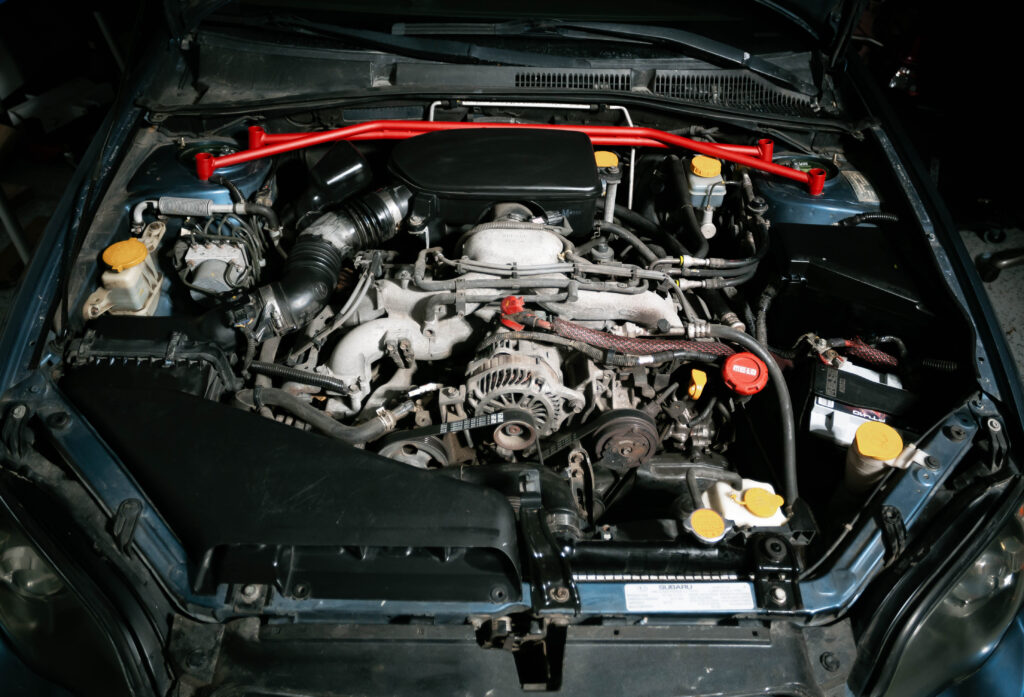
-
Save
Regularly inspect your Subaru’s undercarriage for signs of oil, transmission fluid, or coolant leaks. Address any leaks promptly to prevent damage and overheating.
A common place to look for leaks is around the oil cooler (I’ve had an oil cooler coolant line begin leaking on me and nearly overheating my Subaru.) You should also inspect any lines going into and out of the radiator. These fittings can eventually begin to loosen and cause a leak that might go undetected. Look for any sign of previously dried fluids that may have evaporated while the car was warm and then look for active leaks. I also like to check the valve cover gaskets as they can get old and dry which causes a good amount of oil loss.
8. Brake System Maintenance

-
Save
Inspect your brake pads and rotors for wear and tear. Off-roading with larger tires can be tough on brakes, so it’s crucial to keep them in top condition for safety. Make sure to clean any debris out of the brake components after driving through mud, sand, and any other potentially damaging terrain. Follow the manufacturer’s guidelines for proper brake fluid changes.
I know it’s common to want to upgrade to a larger brake kit after lifting a Subaru. However, I’ve found that simply bleeding the stock brakes and keeping them maintained offers more than enough braking power.
Consider upgrading to high-performance brake components for improved off-road stopping power. A set of pads and rotors from a company like EBC may help give your brakes a more aggressive feel to help offset the bigger tires.
9. Electrical And Wiring
Ensure that all electrical connections and wiring are well-protected from moisture, mud, and debris. I like to use dielectric grease on my electrical connectors to insulate them from water and to make sure each one can slide freely to get a strong connection. If you have missing splash guards, consider replacing them or getting skid plates to mitigate water exposure.
Regularly inspect your lighting, winch, and other electrical components to ensure they function properly. I always test my winch BEFORE I leave the house to head out for an off-road trip. It’s good to know if there is an issue before you are stuck in a bad situation.
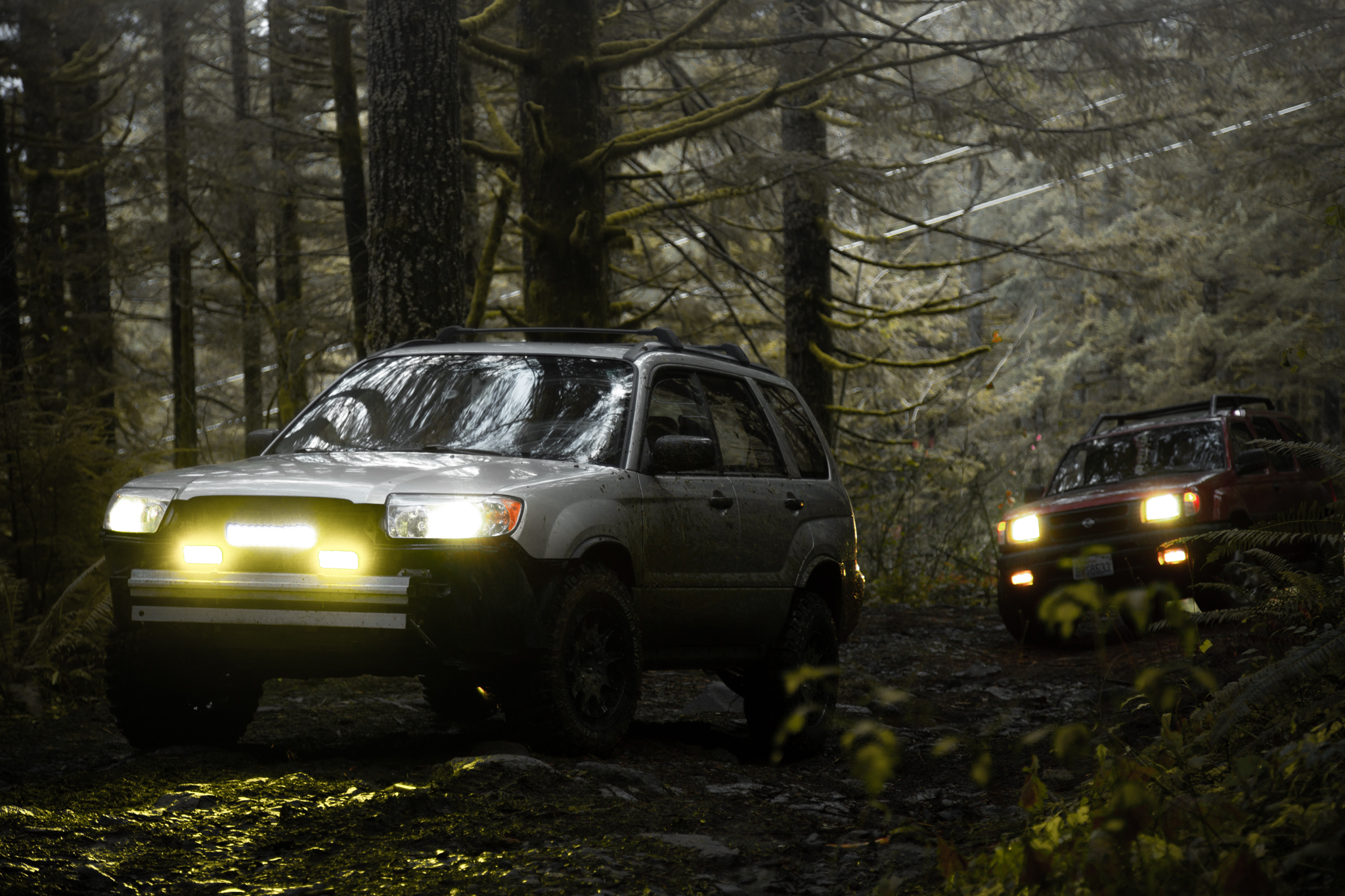
-
Save
10. Professional Inspections
Periodically have your car inspected by a professional mechanic or Subaru specialist. They can identify issues that may not be immediately apparent and recommend necessary repairs or adjustments.
I consider myself pretty knowledgeable regarding Subarus. I can fix most things myself and have performed many diagnoses and repairs on the trail. However, I still rely heavily on professionals when it comes to things I’m not familiar with and to make sure I’m keeping up on my maintenance. It’s kind of like visiting the doctor. It’s our job to care for our bodies and to be proactive. But sometimes it’s good to have a check up.
By following these maintenance tips, you can enjoy many years of off-road adventures with your lifted Subaru while minimizing the risk of unexpected breakdowns or costly repairs. Remember that proper maintenance not only ensures your safety and the safety of those around you, but also enhances the longevity and performance of your off-roader.
Share via:
